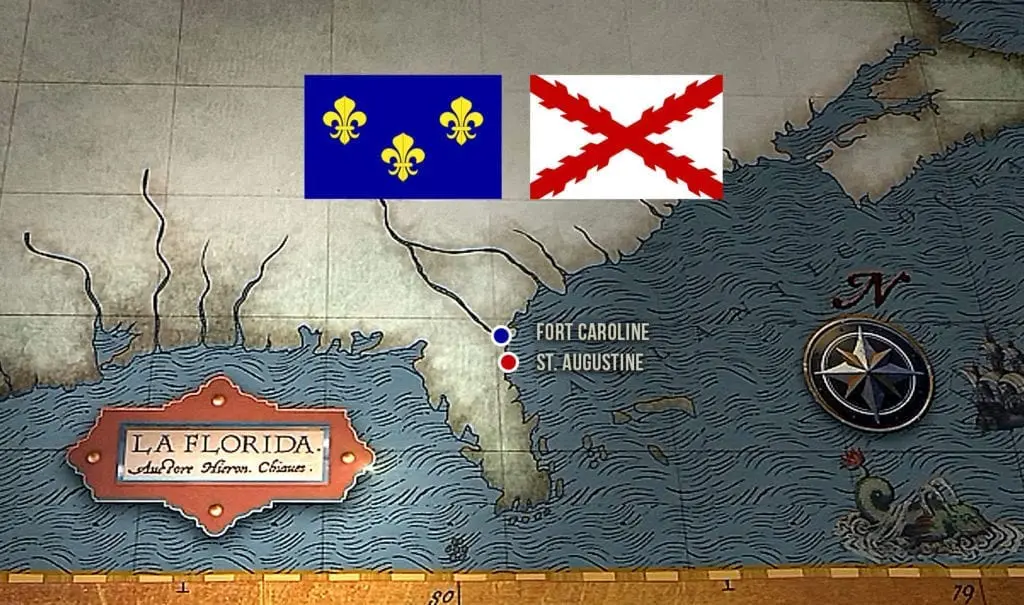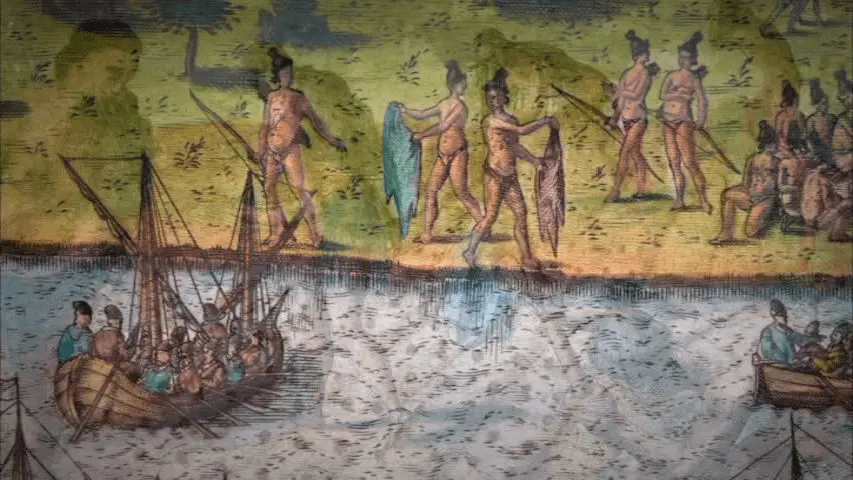St. Augustine, Older Than The Plymouth Colony (1565 vs. 1620)
As an important settlement in the early days of colonization in North America (The New World), St. Augustine has played an instrumental part in the history of Florida. In fact, St. Augustine is the oldest settlement in the United States that Europeans have continuously occupied. Founded in 1565 by Pedro Menendez, almost 50 years before the Pilgrims landed in Plymouth (1620), the city has been through many interesting ups and downs over the years that are worth knowing about.
History has many things to teach, and having a little more knowledge about the history of St. Augustine and the history of Florida will give you a greater appreciation for the area. Whether you are proud to live in the ‘Sunshine State’, or if you are planning to visit as a tourist, having a better understanding of where you are always helps you to forge a better connection with the destination. With more context and a sense of the forces and events that shaped the city into what it is today, you will be able to see the city through new eyes.
Let’s look at some of the foundational moments in Florida’s history that highlight the role of the city of St. Augustine in that story.
Early Settlement
One of the Spanish conquistadors, Pedro Menendez, originally founded the city of St. Augustine. King Philip II of Spain sent Menendez to the New World. This was primarily to expand Spanish control in the southeastern area of the New World and prevent French interests (and other empires) from settling and colonizing the region that is now known as Florida. Upon landing in the area, Menendez and his group established a settlement called San Agustin (St. Augustine).
Conflict with Jean Ribault and The French Huguenot Massacre
Jean Ribault, a French Huguenot, belonged to a community of Protestant Christians who Catholics in France were persecuting at the time Menendez was establishing St. Augustine in Florida.. He was one of the leading French figures in the New World at that time, sent by Admiral Coligny (leader of the Huguenots) to scout locations for potential Huguenot colonies.
Knowing that King Philip II of Spain had recently sent Menendez to the New World with orders to hunt down and destroy French efforts to establish colonies in the southeast, Ribault attempted to gain the strategic advantage and attack Menendez first.
Ribault set sail from Fort Caroline with a plan to pre-emptively attack Menendez at St. Augustine. Unfortunately, intense storms destroyed Jean Ribault’s ships and stranded all 350 men near present-day Daytona Beach. In a very cunning counterattack, Menendez’s troops marched by land, through the storm and attacked the now poorly defended French settlement of Fort Caroline (present day Jacksonville). The Spanish completely overwhelmed the fort. The Spanish killed most of the French and captured their supplies.
Back on the beach, Menendez was able to round up Ribault’s shipwrecked men under a banner of peace. Once bound, the French Huguenots were given the opportunity to deny their Christian faith as Protestants or be murdered by the Catholic Menendez. Except for a few, all chose to be executed. It is estimated that almost 350 men (including Jean Ribault) were murdered near St. Augustine, Florida.
Today, we refer to this as the Matanzas Massacre.
 Encounters with Indigenous Groups
Encounters with Indigenous Groups
Following these conflicts with the French, the Spanish throne attempted to rely on St. Augustine as a branching off point for expanding their reach in La Florida and the New World. However, early encounters with indigenous groups hindered these plans. Faced with periodic attacks by hostile groups in the area, like the Timucuan Indians, the settlement nevertheless endured.
Unlike Jean Ribault, who had established good relationships with indigenous people like King Saturiwa of the Timucua, the Spanish looked to enslave them and sell them into captivity (a practice seen repeatedly by the Spanish conquistadors). This and other hostile actions toward the native people created bad relations between them and the Spanish.
St. Augustine Under British And Spanish (Again) Control
British and Spanish forces perpetrated attacks on the settlement of St. Augustine throughout the seventeenth to eighteenth centuries. Eventually, the settlement was given to the British as part of the Treaty of Paris, which ended the Seven Years’ War.
Many of the former residents of the St. Augustine settlement left the area for Spanish-controlled locations following the British takeover. They initiated many new governance changes and construction projects that reflected the cultural transformation taking place. The British ultimately controlled the area for about twenty years between 1763 and 1783.
In 1783, however, the settlement changed hands back to Spain following the new Treaty of Paris. In effect, the United States gave Florida back to the Spanish for its assistance in the War of Independence. Much of note did not mark this new period of Spanish occupation in the history of Florida. Finally, in the early nineteenth century, the Spanish ended up trading Florida back to the Americans. From this time on, it became a part of what we now know as the modern United States.
Florida And The Civil War
Florida became an American state in 1845. Soon afterwards, it played a small role in the American Civil War. Although Confederate forces initially controlled it in the early days of the war, Union troops soon took over and maintained control without incident. The Confederates did not attempt to take over St. Augustine again, and it soon became a Union stronghold.
Following the end of the war, St. Augustine continued to be occupied by a large number of US Army soldiers. In fact, many of these soldiers decided to permanently settle in the area, which shaped the area’s culture in the following years.
Dive Into The History Of Florida
These days, St. Augustine is a popular tourist destination for many domestic and international travellers. With an excellent climate and many historical sites to explore, it is one of the many must-see Florida locations.
This quick jump through some of the pivotal events of the history of St. Augustine only represents a snapshot of the richness of the history of Florida. With many significant and interesting characters and unusual and noteworthy events to discover, there is so much more to discover and learn about Florida’s fascinating history. Re-discover your inner “explorer” and come check out the fascinating lives of Jean Ribault and Pedro Menendez for yourself.

 Encounters with Indigenous Groups
Encounters with Indigenous Groups